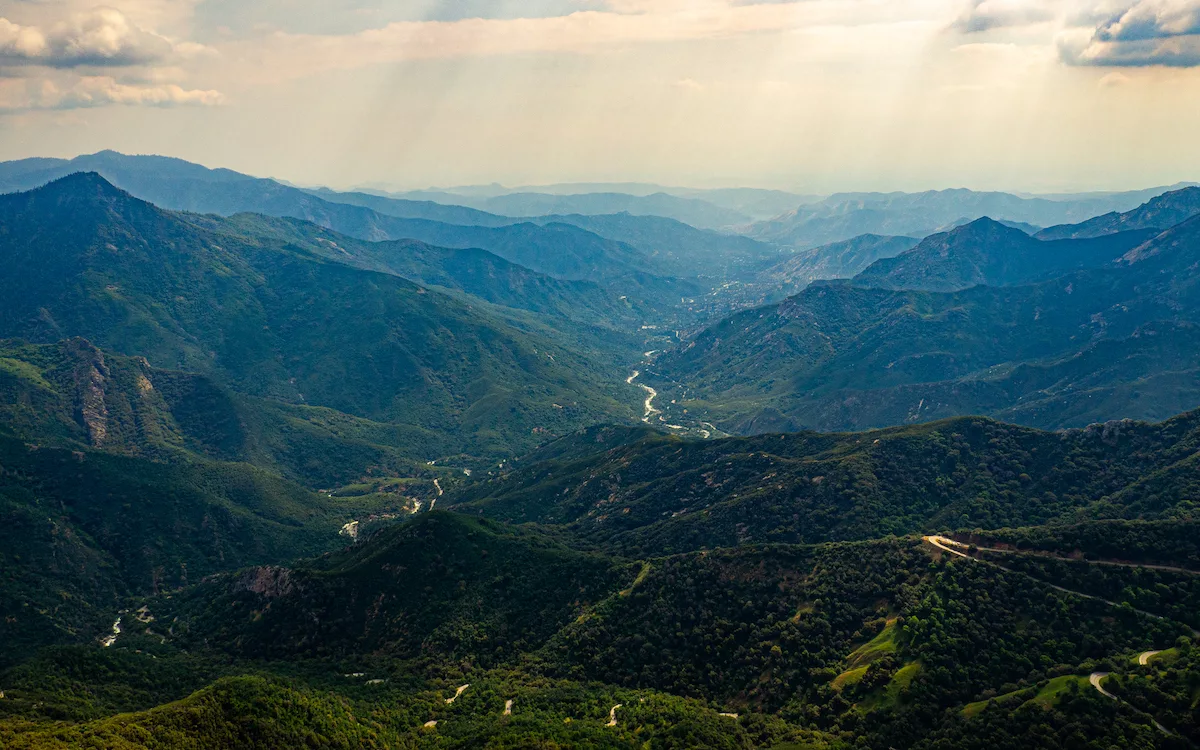Today we have a date with Sequoia National Park!
Early morning
It’s 6 a.m. on Monday, May 13. We wake up in this clean and well-maintained upper-middle-class American house. Always careful not to get the wrong door, we take a shower upstairs. We then have breakfast in our room. It consists of an avocado and cream cheese bagel, accompanied by a cup of coffee.
We’re now ready to tackle the day’s activities, which will take us first to Mariposa Grove, before heading south to Sequoia National Park. With our bags packed, we set off down the street to find our Mitsubishi. And we’re on our way to Mariposa Grove, just over an hour north of here.
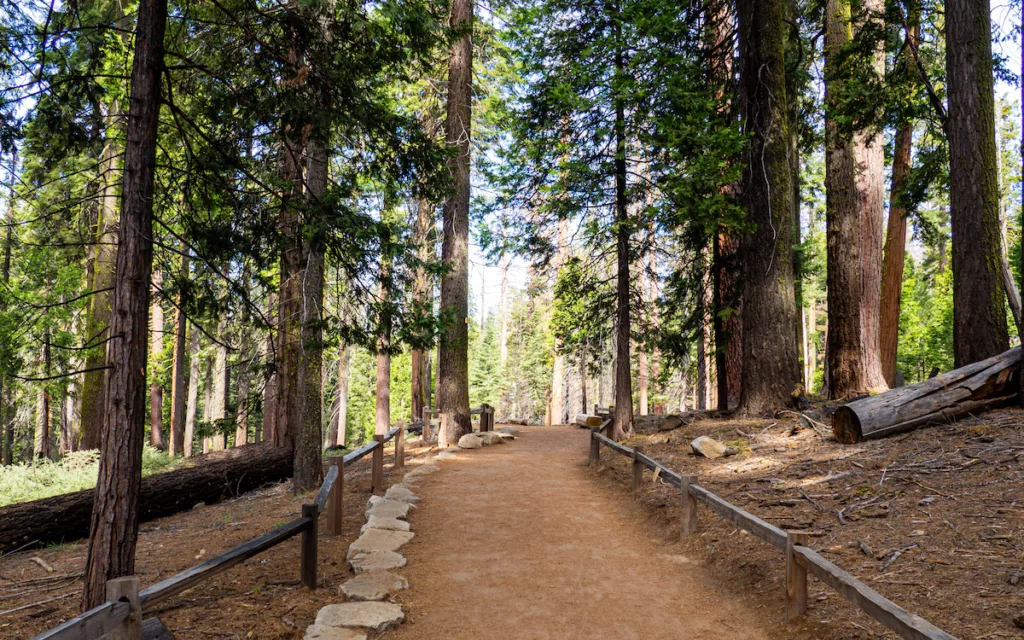
Mariposa Grove
Mariposa Grove of Giant Sequoias is one of three giant sequoia groves in Yosemite National Park, the other two being Merced and Tuolumne. To enter the small park, we have to leave the car in a parking lot and take a bus. It’s relatively early in the morning and we’re among the first visitors on this route.
Native American tribes
On arrival, we see a long sign signed by the Traditionally Associated Tribes of Yosemite. It explains that Native American tribes were here long before the first settlers. They continue to maintain a strong relationship with these ancestral lands, which are now enjoyed by people from all over the world. Their traditional ecological knowledge has long ensured their survival, while improving and diversifying the ecosystem.
The same sign says, for the benefit of our visitors, that as we walk through this park, we should remember who has walked here before us and imagine who will walk here after us. Respect for this place is a must. The signatory people must be able to continue to enjoy these lands as their ancestors did before them.
Grizzly Giant Loop Trail at Mariposa Grove
The walk we plan to take this morning, before heading off to Sequoia National Park, is 1.2 miles long (about 2 km). It’s called the Grizzly Giant Loop Trail and doesn’t seem to present any difficulties. It takes us along a trail that allows us to see a number of giant sequoia trees. As it’s still early in the day, we’re lucky enough to see some deer close by. With so few visitors, we keep as quiet as possible to avoid disturbing the deer.
Explanatory panels are a source of culture
Signs all along the route explain the history of the park. One of them asks us to stay away from the sequoias, as this is a restored area where different organisms live in symbiosis. This applies to the sequoias, of course, but also to the insects and small animals that come to take refuge here. If we come too close and crush insects, even inadvertently, we upset this ecosystem.
Signs read “Give Plants a Chance! Please Stay Off” so we don’t forget. A little further on, we learn that the ground beneath our feet was once part of a network of roads made of cobblestones and asphalt. Unfortunately, when sequoias seeds fell from the giant trees, they had no chance of germinating. Yet a single sequoia tree contains thousands of egg-sized cones, inside which these tiny seeds need help to flourish. Many of these cones fall off on their own. Once on the ground, species like the Douglas squirrel play an essential role in seed dispersal. Squirrels eat the fleshy scales of the cones, releasing the seeds.
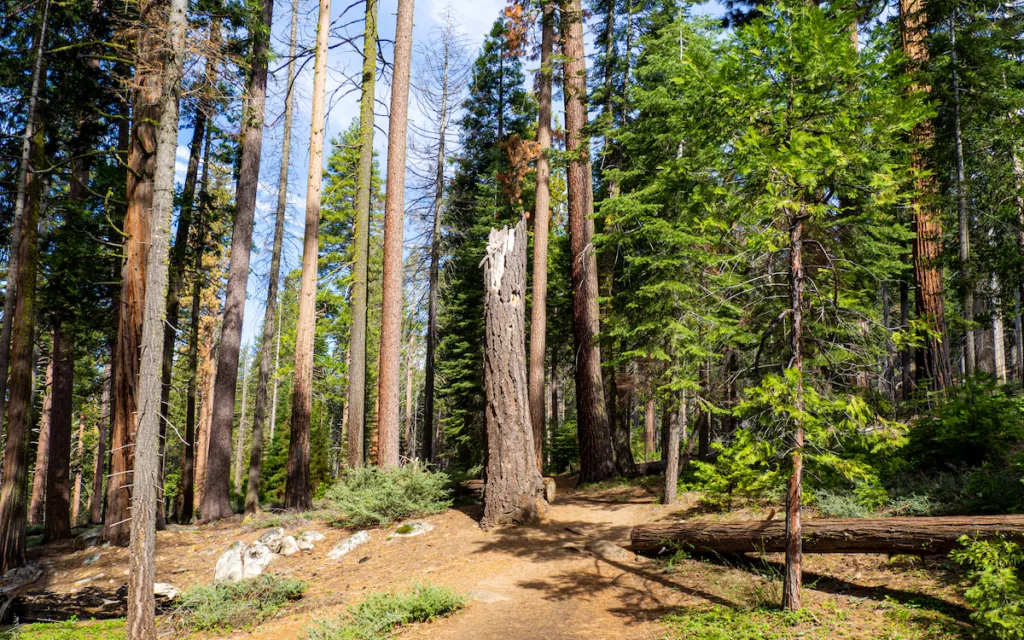
Lightning, fire…
Fire also plays a major role when it intervenes, as we saw in Yosemite yesterday. Fires caused by lightning reduce competition from other conifers. They burn the leaf litter on the ground, leaving a fine layer of nutrient-rich ash. This creates perfect conditions for seedlings to germinate. Finally, the increasing heat of the fire helps dry out the cones, allowing the seeds to disperse. This is a key element in the success of sequoias.
Developments in national park management
To reduce leaf litter and encourage giant sequoia reproduction, the National Park Service has begun lighting “prescribed fires”, which are deliberately set and closely monitored by rangers, in spring and autumn.
The cobblestones and asphalt of the old road network were removed and the ground remediated only in 2016. So today, when the seeds fall from the conifers, they land on fertile, well-hydrated soil – in other words, the ideal place to begin their long journey to adulthood.
Chipmunk stripes
We make our way along the trail at our own pace, but time flies as the explanations are so interesting. One of them is not a historical fact, or even a scientific precision, but a legend, which we have chosen to tell our daughters back in France. This is the tale of how the chipmunk got his stripes on his coat. The story features Grandfather Bear, “the strongest of all the forest animals“. It’s written on this sign in front of us by the same Traditionally Associated Tribes of Yosemite who greeted us on the first sign at the entrance.
The Grizzly Giant
Further on, we pass the Grizzly Giant, one of the largest trees in the Mariposa grove. It is estimated to be 2,900 years old. It measures 63.7 metres in height, 8.5 metres in diameter and 29 metres in circumference at its base. In fact, as you approach its trunk, you can see the scars of fires. As with the birth of the tree, fire plays a very important role in the growth of a giant sequoia. Fires, caused by lightning, have burned part of this tree on several occasions (once every five to twenty years on average).
The Grizzly Giant, like other older redwoods and those damaged by lightning or fire, has reached this size due to the loss of sapwood and an ability to move water from the roots to the crown. Although these trees fascinate us with their height, the reason they are so robust comes from below. Giant sequoias depend on wide, shallow roots to maintain their balance and absorb the water and nutrients they need. Hidden beneath our feet is an ecosystem that provides everything the redwoods need, as we mentioned earlier.
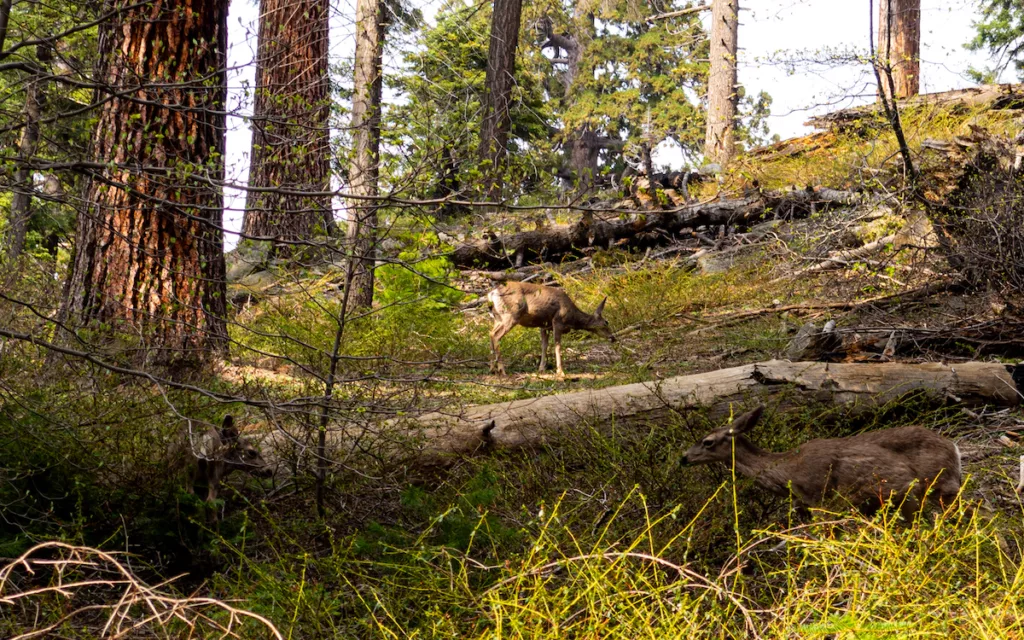
Some celebrities among the Sequoia trees
Our route also takes us past the California Tunnel Tree. Many of you will know that one of the giant sequoia trees, the Wawona Tunnel Tree, was excavated in the late 1800s and visitors could drive through it. Alas, as might have been expected, the tree finally fell to the ground in 1969, more than 2,000 years after its birth, while the planet’s eyes were on the heavens that year.
The California Tunnel Tree was also dug in 1895, like the Wawona, and is still standing. As you walk past it, you can see that the bark of the redwood has started to grow inwards. The tree seems to be closing the hole created by man. Today, the “Surviving Tunnel Tree“, as it is known, gives us an idea of what Wawona‘s famous tunnel tree looked like in its day. These two behemoths put Mariposa Grove on the map. This is one of the reasons why the grove became part of Yosemite National Park.
Off to Sequoia National Park
Mid-morning, we take the shuttle back to the car park. It takes us back to the parking lot, where we find our vehicle. Off to Sequoia National Park!
224 kilometers and a full tank of gas later, we arrived at the entrance to the famous Sequoia National Park. The road took us past the Kaweah artificial lake created by a dam in the middle of the arid land. It’s photogenic and we stop for a few shots. As with Yosemite, another stop in front of the emblematic Sequoia National Park sign is in order. No one to take our picture this time, but never mind.
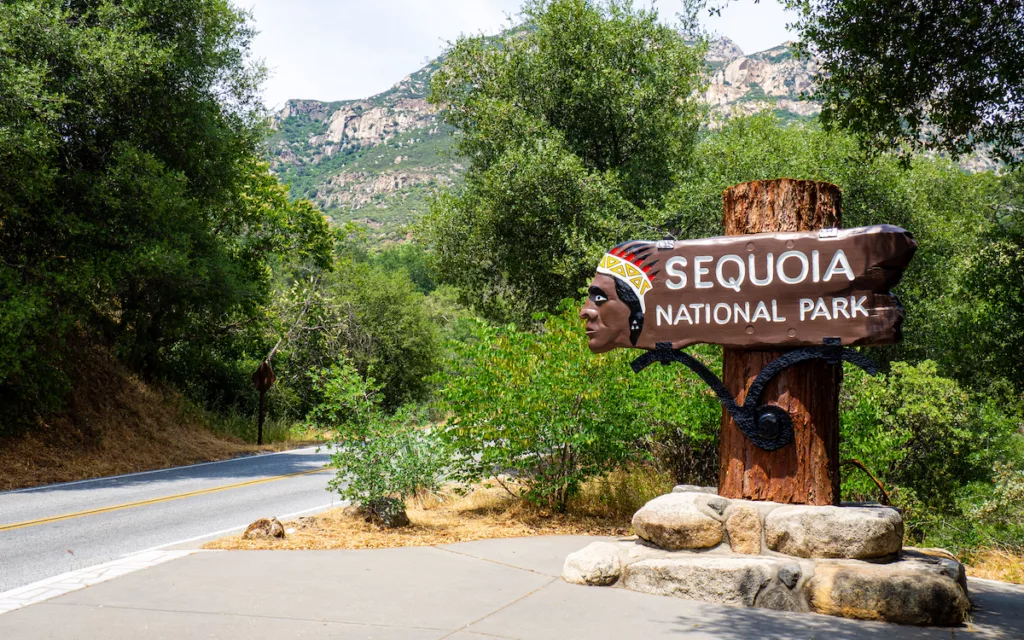
Tunnel Rock
On the Generals Highway, we cross the path of Tunnel Rock, a granite boulder that forms a tunnel in the road – now bypassed for safety and to ensure the safe passage of motorhomes. At the park, we park our vehicle in a dedicated parking lot and continue on foot. We take three walks: Crescent Meadow Road, Moro Rock and General Chairman Tree Trail.
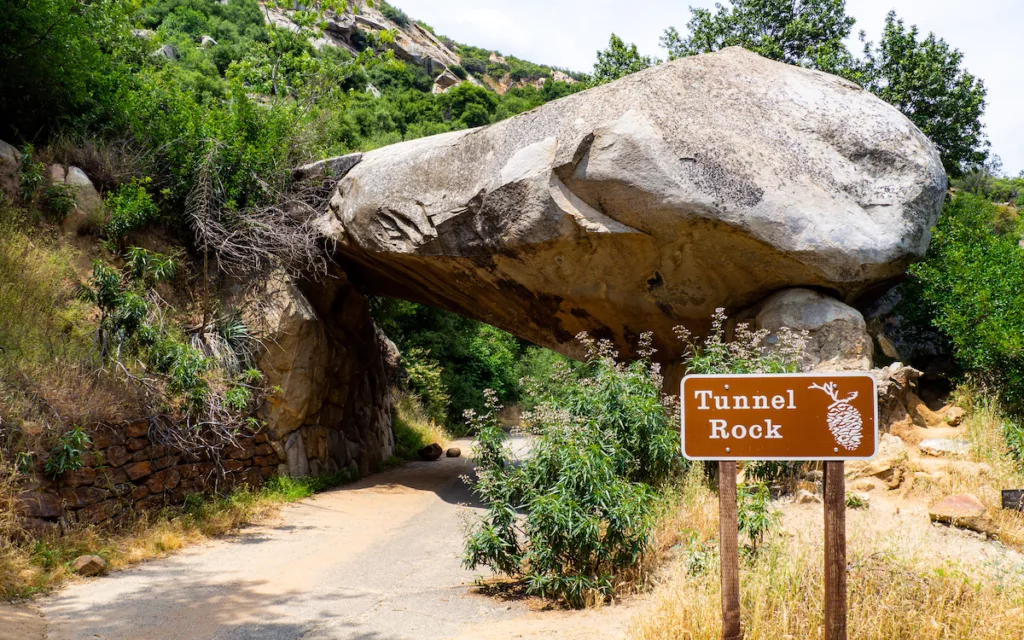
Crescent Meadow Road
The first, a wide stretch of Crescent Meadow Road, takes us to see many giant Sequoia trees, including the Booker T. Washington tree – dedicated to the memory of Booker T. Washington, a leader of the African-American community in the late 18th and early 19th centuries – and the Auto Log. The latter fell in 1917. Its diameter exceeds 6 metres. Initially, when the Sequoia fell, the upper part of the trunk was removed so that it could be used to house vehicles and show the public just how large and robust redwoods can be. Unfortunately, the rotting of the dead tree means that it can no longer be used in this way, and only people are allowed to walk on it. We come across many small animals such as squirrels and other rodents. It’s not unusual to come across them in Sequoia National Park…
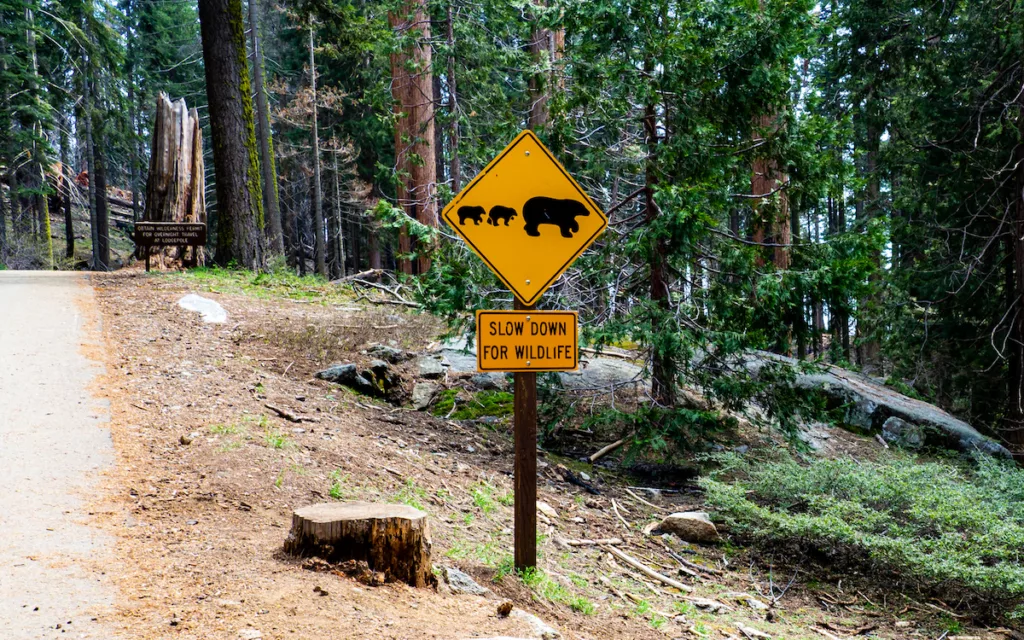
Moro Rock
The second hike, Moro Rock, takes us into the forest. We’re now in the middle of the trees, and will be climbing a large series of stairs. At the very top, we can access the highest part of a rock that culminates at 2,050 meters above sea level! From this point, the view can reach up to 150 miles on the horizon on a clear day.
A breathtaking view!
The climb takes a little time, but we enjoy it, both for the physical effort required (over 350 steps) and for the scenic beauty (the view of the High Sierra peaks) that can be seen after just a few steps. At the very bottom, signs clearly explain that people with heart problems or any other symptoms that might prove troublesome during the climb are advised to stay put. We’re also urged to take a drink of water before considering the climb.
Mass detachment
The first steps were made of wood in 1917. In 1931, they were replaced by concrete ones for safety reasons and to blend in with the granite rock. Having reached the top, we’re delighted to have accomplished this sporting challenge. Above all, we have no regrets: the view is undeniably worth the effort.
Various panels explain the history of the summit, what can be seen from here and other information about Moro Rock. In particular, we learn that, since the rock is made of granite, little by little the mass of which it is composed cracks. Huge slabs then break off. So, when one layer peels off, it releases the granite beneath. The next layer is exposed to the same situation. At some point, it will expand and separate from the parent rock. This event progressively narrows Moro Rock.
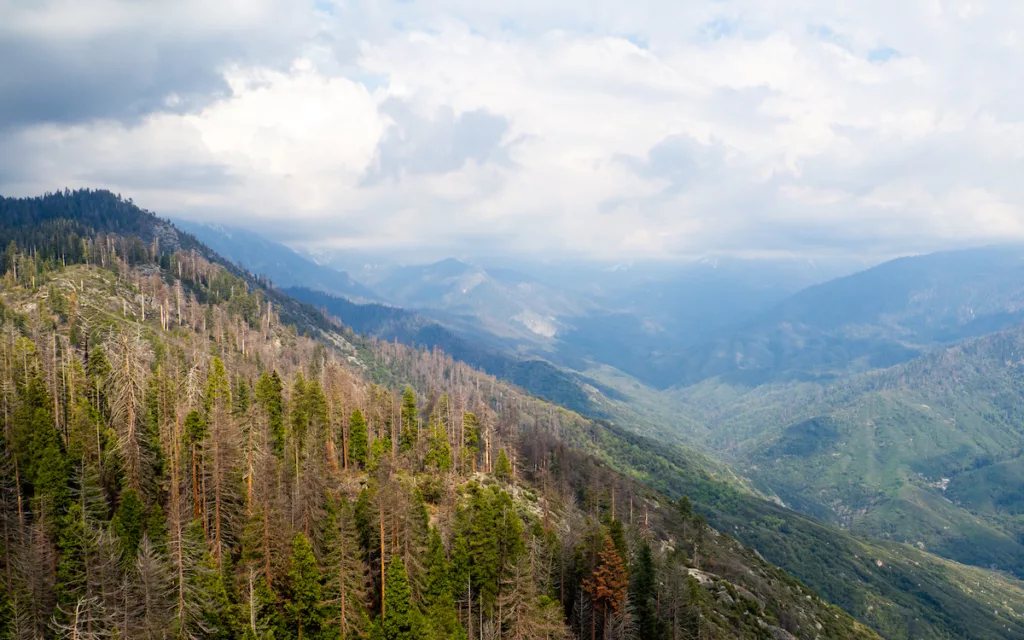
Pollution, again and again…
Another sign informs us how pollution – from industry, agricultural processes and exhaust fumes in particular – has replaced the smoke from forest fires (now under control) to alter not only the view from Moro Rock, but above all the development of the surrounding plants and animals. Although on several occasions we step aside to let other visitors who haven’t yet discovered the summit climb up, the descent is quicker.
American or French?
Once at the bottom, as we pull away from the granite monster, tourists start making a lot of noise, even though it’s quiet and calm here. We’re near the Crescent Meadow circuit and Sarah gives me a look accompanied by “Ah, those Americans…“. I listen carefully to what he’s saying and reply, “They’re French, Sarah, they’re French!“.
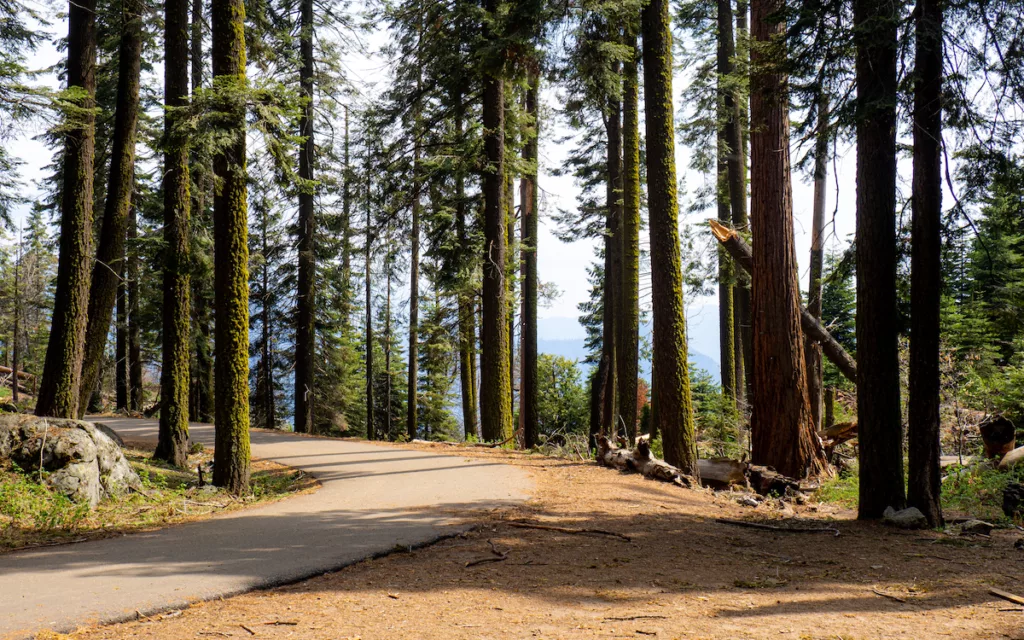
Crescent Meadow
On our third and final walk through Sequoia National Park, we see the largest living species we’ve ever seen: the General Sherman Giant Sequoia. It measures 84 metres in height, 31 metres in diameter at ground level and 11 metres in diameter at trunk level. While seeing it is an interesting discovery, the sheer number of visitors all around detracts a little from the experience. I’m happy to have this behemoth in front of me, but I have far superior feelings when I wander, alone with Sarah, through Giant Forest, the sequoias forest where I feel infinitely small next to these hundreds of years old trees.
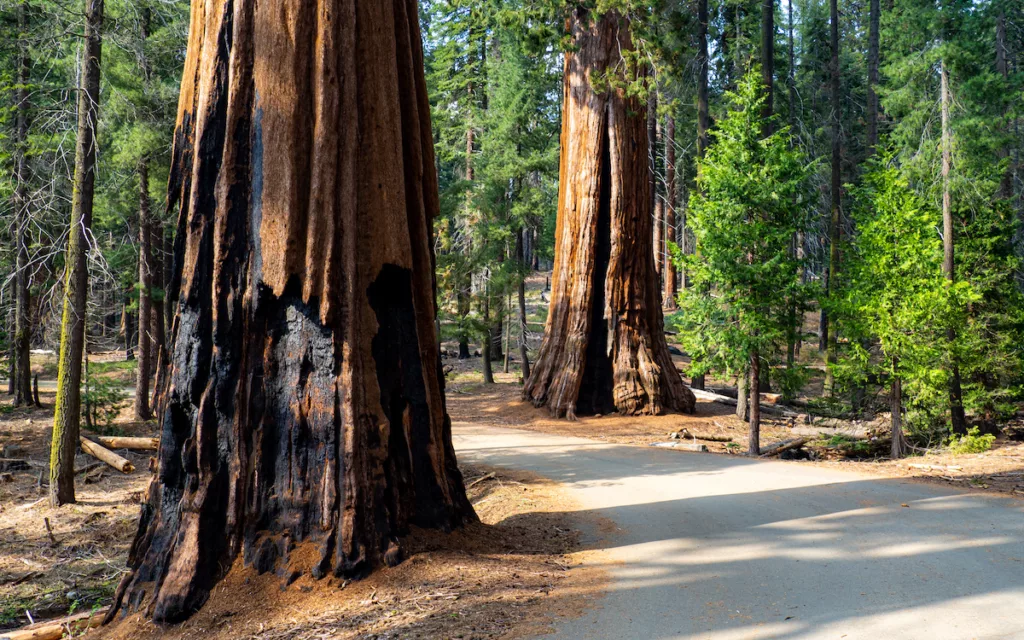
An old tree
The walk also takes us to the Parker Group, the Sentinel and the Tough Twins. A “slice” of trunk also catches our eye. It’s a slab from the stump of a giant sequoia that tells a story about fire and tree survival. The growth rings here show that the tree lived for around 2,210 years. In particular, there are marks showing that it has faced at least 80 different fires that were hot enough to leave scars. The oldest sequoias survive all but the hottest fires. In fact, their thick bark often prevents them from succumbing to the heat. The bark contains sufficiently little sap that it is not very flammable.
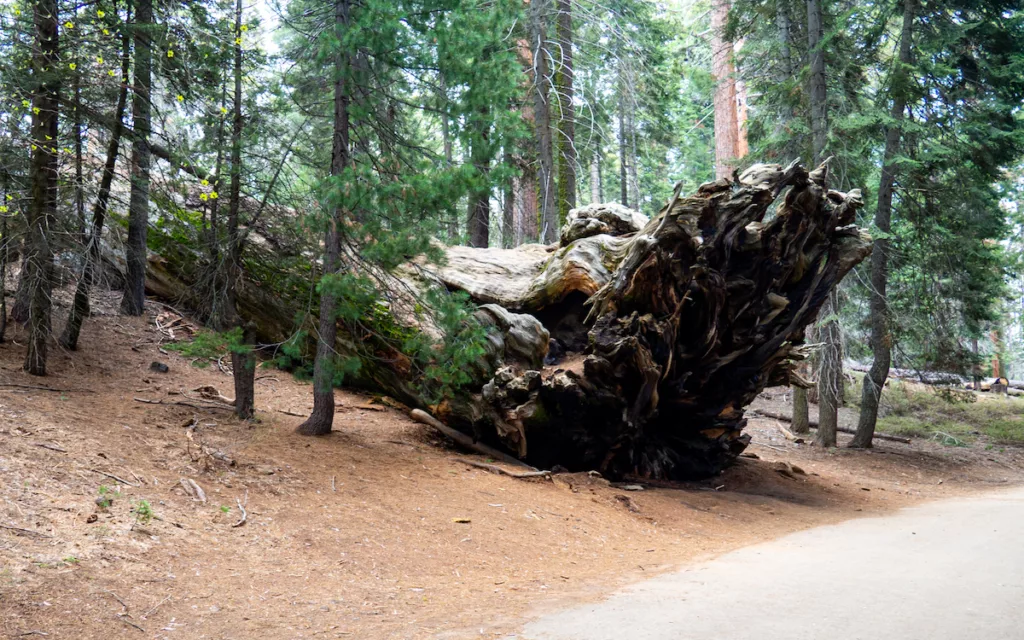
A long honeymoon
Before leaving Sequoia National Park, we come across a few more deer here and there. We take care not to disturb them and return to our Mitsubishi as the sun slowly begins to decline. On the Generals Highway, we stop a couple of times to take a series of shots. During one of our stops, we observe a couple in a van who got married almost a year ago and have decided to travel around the world as their honeymoon. We liked the idea and decided to follow them on social networks.
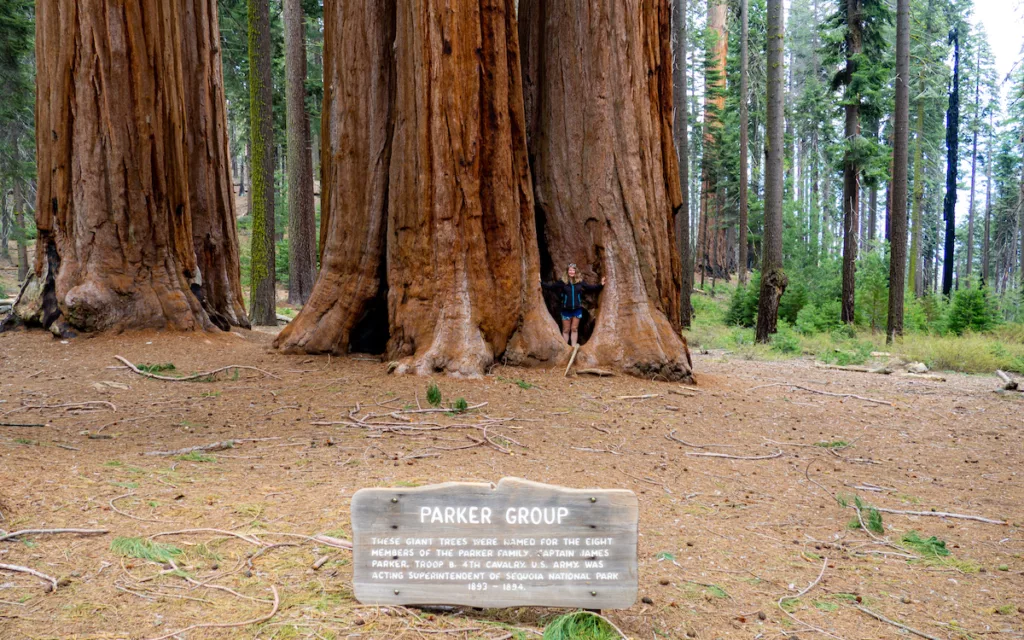
Discovery whets the appetite!
As the sun sets, we need a bite to eat before heading to our AirBnB for the night. Luckily, we come across a roadside pizzeria. As we approach, Alan Jackson sings “Don’t Rock The Jukebox” over the speakers on the terrace. When we enter, the air-conditioning is blowing hard. We order one pizza each, well deserved. Then, we eat to the tunes of Keith Whitley, Garth Brooks and Joe Diffie. A late-model Ford Mustang pulls up in front of the restaurant, and we’re off again for the few kilometers left to our AirBnB in the heights of Three Rivers.
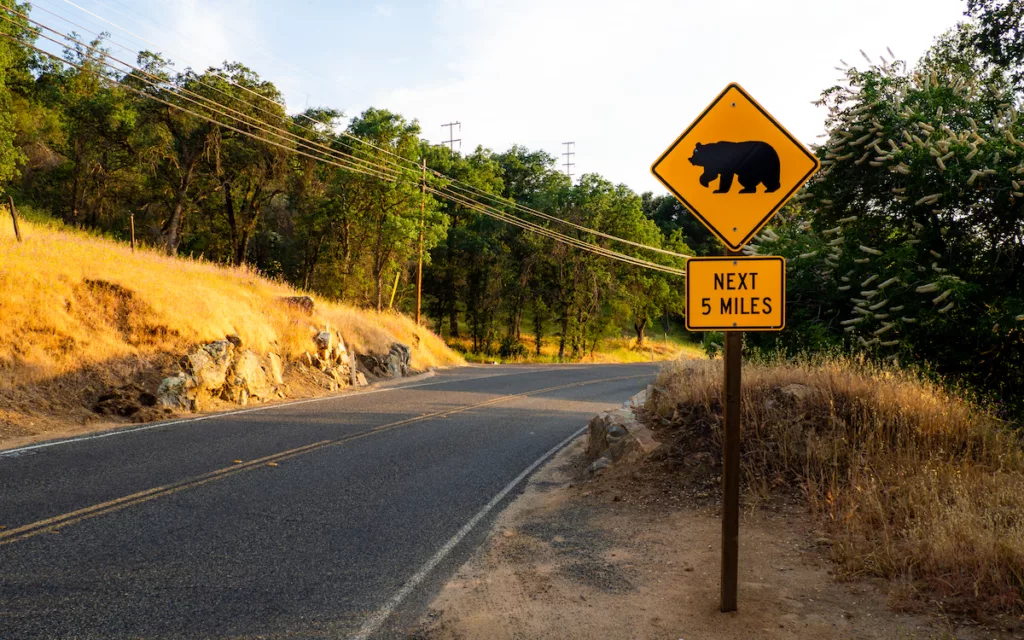
Our AirBnB in Three Rivers
This one is simply breathtaking. Mike, our lovely host, works as a Ranger at Sequoia National Park. He is of Spanish origin and grew up here in California. He owns an absolutely sublime house in the hills, the upper part of which he rents out. It comprises a living room, veranda, kitchen, bathroom and bedroom. The upstairs is very modern, but subtly combines wood (walls, exposed ceiling beams, tables, furniture) with very modern everyday objects (TV, fridge, oven, etc.) and a few well-chosen plants.
Wi-Fi is not an option here, the aim being to cut ourselves off from the world for a night. So we’re off to get some rest and, while I’m writing without publishing the article on my blog, Sarah is looking at a book of photos on hand.
Today, between Mariposa Grove and Sequoia National Park, we walked 10 miles, drove 170 miles and took 301 photos.


